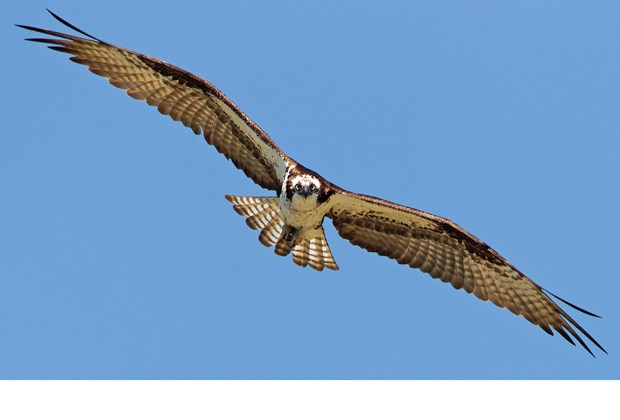Spring is unfolding on the North Shore with butterflies, birds and wildflowers delighting our senses.
In damp places in the woods, skunk cabbage shines like a forest beacon, while the lovely pink flowers of salmonberry and redflowering current attract rufous hummingbirds, recently arrived from wintering grounds in Mexico. Some of these tiny birds make their way all the way to Alaska - an amazing journey.
Spring is hummingbird season on the North Shore with two species commonly seen, the resident Anna's and the rufous. However, most summers there are also sightings of the tiny calliope hummingbird. At the Conservation Area at Maplewood Flats it has been spotted sipping nectar of black twinberry flower (a species of honeysuckle).
The eastern (east of the Rockies) ruby-throated hummingbird is not one to be expected on the North Shore, but there is at least one confirmed sighting for Cypress Provincial Park. When it comes to birds, you can expect the unexpected, which is part of the thrill of birding.
Another wonderful aspect of spring migration is the beautiful music of birds, potentially proving inspirational for poets and composers. April brings us voices not heard in a year and we have to refresh our memories! It's a fact that to really appreciate bird song you need to be outside at the crack of dawn. Some birds, like the robin and black-capped chickadee, start early. Those who've had a robin singing outside their bedroom window at 4 a.m. know this all too well.
Some birds, like the black-capped chickadee, with its "chick-a-dee" call are name-sayers. Its song is the familiar "tea-time" or is it "cheeseburger?" Then, there is the purple finch whose rich, warbled song is a treat to the ears.
But what are some of these birds that are arriving from wintering grounds from as far away as South America? An example of these migrants at the conservation area is the yellow-rumped warbler.
There are two types of yellow-rumps on the North Shore: Audubon's with a yellow throat; and the Myrtle with a white throat.
Some of us remember when they were separate species.
As the weeks progress, expect other species, like the warbling vireo, orange-crowned warbler, black-headed grosbeak and western tanager. Every day brings new and exciting discoveries.
Local birds put their hearts into song, like the beautiful canary-like voice of the house finch or the bright clear notes of the white-crowned sparrow. A few, like the brown creeper, golden-crowned kinglet and bushtit are a good test of your hearing with their high frequency voices. Bird song is serious business, including attracting a mate and setting up breeding territory, a way of staking a claim.
During spring migration, it's a good idea to watch the skies for migrants, like swallows, swifts and the turkey vulture. The vulture, with its tiny head and wings held in a "V," is easy to identify on the wing.
We all await the return of the osprey (there was an early March sighting at Maplewood) to their nest atop a dolphin across from Osprey Point at Maplewood Flats.
Cranky geese, colourful goldfinches, flashing throats of hummers and the music of wild birds. Spring is a wonderful time on the North Shore. Enjoy all nature has to offer. Keep safe.
Al Grass is a naturalist with Wild Bird Trust of British Columbia, which offers free walks at The Conservation Area at Maplewood Flats on the second Saturday of every month. The next walk will be Saturday, April 11 at 10 a.m., and participants will look for signs of spring. Meet at WBT's site office, 2645 Dollarton Hwy, North Vancouver. Walks go rain or shine. wildbirdtrust.org



